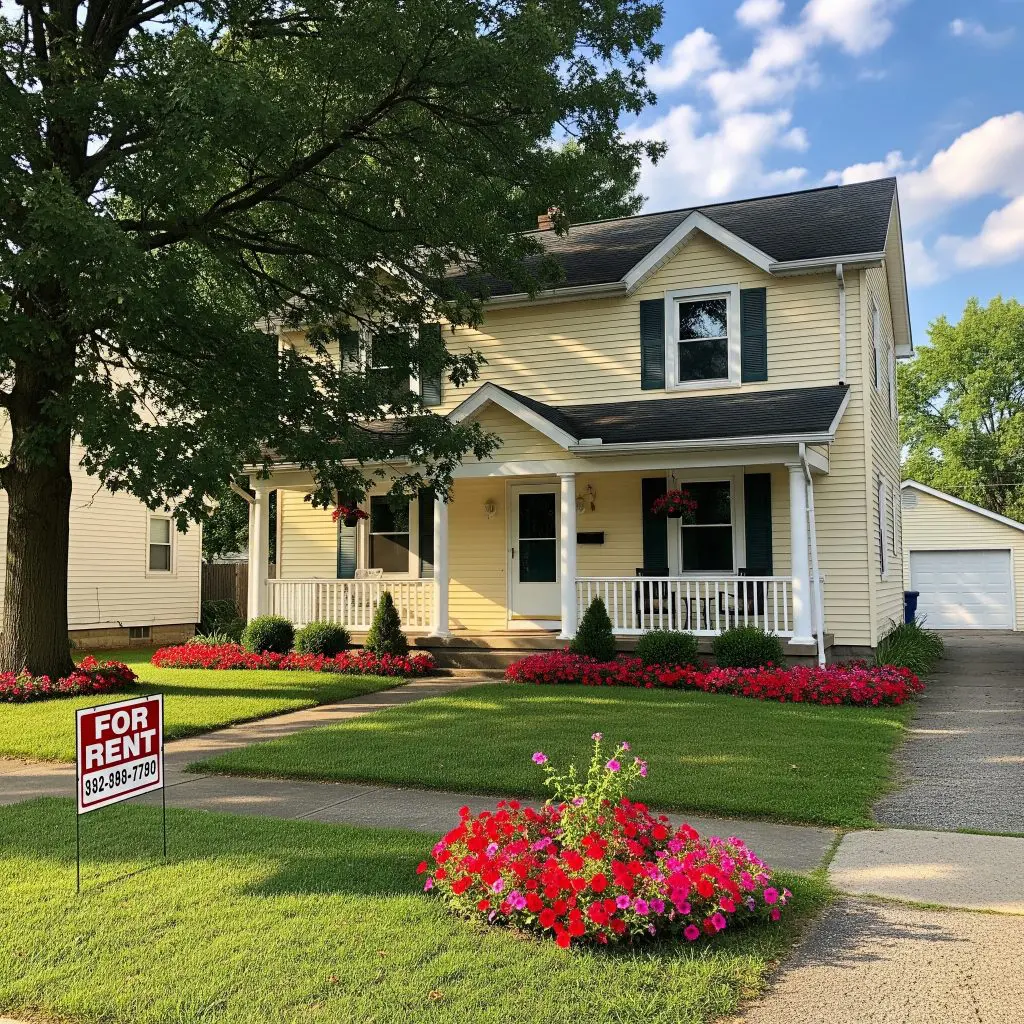How to Use a 1031 Exchange to Defer Capital Gains Taxes: Ohio Investor’s Guide
Cleveland – October 1, 2025: One of the most powerful tools available to real estate investors in Ohio is the 1031 exchange, which allows you to sell an investment property and reinvest the proceeds into another like-kind property—while deferring capital gains taxes.
- What is a 1031 Exchange?
- Benefits of a 1031 Exchange for Ohio Investors
- How a 1031 Exchange Works
- Current Market Insights for Ohio Investors
- Ohio Geo-Targeting Opportunities
- External Resources for Ohio Investors
- Q&A: Using a 1031 Exchange to Defer Capital Gains
- Why GHC Funding is Ohio’s Go-To 1031 Exchange Lender
- Final Thoughts
- Call to Action
- Get a DSCR loan quote in Ohio.
Whether you’re investing in a duplex near Ohio State University (Columbus, 43210), a multifamily in Cincinnati’s Over-the-Rhine (45202), or an industrial property in Cleveland (44114), understanding how to structure a 1031 exchange can help you grow your portfolio faster, protect your profits, and maximize your financing opportunities.
This guide explains exactly how to use a 1031 exchange to defer capital gains taxes, market-specific insights for Ohio investors, financing strategies through GHC Funding, and key steps for executing a successful exchange.
Need capital? GHC Funding offers flexible funding solutions to support your business growth or real estate projects. Discover fast, reliable financing options today!
⚡ Key Flexible Funding Options:
GHC Funding everages financing types that prioritize asset value and cash flow over lengthy financial history checks:
DSCR Rental Loan
- No tax returns required
- Qualify using rental income (DSCR-based)
- Fast closings ~3–4 weeks
SBA 7(a) Loan
- Lower down payments vs banks
- Long amortization improves cash flow
- Good if your business occupies 51%+
Bridge Loan
- Close quickly — move on opportunities
- Flexible underwriting
- Great for value-add or transitional assets
SBA 504 Loan
- Low fixed rates through CDC portion
- Great for construction, expansion, fixed assets
- Often lower down payment than bank loans
🌐 Learn More
For details on GHC Funding's specific products and to start an application, please visit our homepage:

Ohio Investor’s Guide
- What is a 1031 Exchange?
- Benefits of a 1031 Exchange for Ohio Investors
- How a 1031 Exchange Works
- Current Market Insights for Ohio Investors
- Ohio Geo-Targeting Opportunities
- External Resources for Ohio Investors
- Q&A: Using a 1031 Exchange to Defer Capital Gains
- Why GHC Funding is Ohio’s Go-To 1031 Exchange Lender
- Final Thoughts
- Call to Action
- Get a DSCR loan quote in Ohio.
What is a 1031 Exchange?
A 1031 exchange—named after Section 1031 of the Internal Revenue Code—allows investors to defer paying federal capital gains taxes when selling an investment property, as long as they reinvest the proceeds into a “like-kind” property of equal or greater value.
This strategy:
- Preserves equity that would otherwise go to taxes
- Expands portfolio growth through reinvestment
- Provides leverage when paired with DSCR, SBA, or bridge financing

Benefits of a 1031 Exchange for Ohio Investors
- Tax Deferral: Reinvest 100% of your profits into new properties without immediate capital gains liability.
- Portfolio Growth: Trade up from small residential to larger multifamily or commercial assets.
- Geographic Diversification: Move equity from Columbus to Cincinnati, Cleveland, or Dayton to capture new market opportunities.
- Wealth Building: Create compounding growth by deferring taxes multiple times over decades.
How a 1031 Exchange Works
Step 1: Sell the Property
- Must be an investment property (rental, multifamily, commercial).
- Cannot be your primary residence.
Step 2: Identify a Replacement Property
- You have 45 days from the sale to identify potential replacements.
- You may identify up to three properties (or more under certain rules).
Step 3: Complete the Purchase
- You must close on the replacement property within 180 days of the sale.
- The property must be of equal or greater value than the one sold.
Step 4: Use a Qualified Intermediary
- Funds from the sale cannot go directly to you—they must be held by a qualified intermediary (QI).
DSCR Loan IQ Quiz!

Test your knowledge of Debt Service Coverage Ratio (DSCR) loans!
Current Market Insights for Ohio Investors
Interest Rates (as of October 2025):
- DSCR Loans: 7.25% – 8.5% (qualification based on rental income, not personal income)
- Bridge Loans: 9% – 11.5% (short-term for acquisitions and value-add plays)
- SBA 7a Loans: Prime + 2.75% (~11.25%)
- SBA 504 Loans: 6.75% – 7.5% long-term fixed
DSCR Loan Requirements:
- No tax returns required – approval based on property cash flow
- LTV up to 80%
- Minimum DSCR ratio: 1.0 – 1.25
- Entities accepted: LLCs, corporations, partnerships
- Eligible properties: Multifamily, mixed-use, retail, office, industrial
Ohio Geo-Targeting Opportunities
- Columbus (43215, 43219): Strong student housing and multifamily demand near OSU and downtown tech hubs.
- Cincinnati (45202, 45220): Historic Over-the-Rhine and University of Cincinnati areas offer high rental yields.
- Cleveland (44114, 44106): Growth in medical and industrial sectors supports long-term CRE stability.
- Dayton (45402, 45409): Logistics and manufacturing centers attract industrial investors.
- Toledo (43604, 43606): Affordable entry points with strong university-driven rental demand.
External Resources for Ohio Investors
- Ohio Division of Real Estate & Professional Licensing – Licensing and compliance
- Ohio Real Estate Investors Association – Networking and investor education
- Columbus Realtors Association – Market data and professional resources
- Cleveland Real Estate Investors Association – Local investor insights
- Ohio Department of Taxation – State-level tax and property rules
Test Your Expertise: The Complexities of the 1031 Exchange

As a sophisticated real estate investor, you understand that the 1031 Exchange is a cornerstone strategy for tax deferral and wealth accumulation. But beyond the basics, the intricacies of the 1031 Exchange rules can pose significant challenges. This quiz is designed to test your in-depth knowledge and highlight critical nuances that separate casual investors from true experts in 1031 Exchange transactions.
Instructions: Choose the best answer for each question.
Q&A: Using a 1031 Exchange to Defer Capital Gains
Q1: What qualifies as a “like-kind” property?
A: Any investment property (e.g., swapping a duplex for an office building). Primary residences don’t qualify.
Q2: Can I use a 1031 exchange for out-of-state properties?
A: Yes—you can sell in Ohio and reinvest in any U.S. market, but many investors stay local for convenience.
Q3: How long do I have to identify replacement properties?
A: 45 days from the date of sale.
Q4: Do I need to reinvest all proceeds?
A: Yes—to fully defer taxes, all equity and debt must be reinvested into the replacement property.
Q5: Can DSCR loans be used in 1031 exchanges?
A: Yes—GHC Funding offers DSCR loans that work seamlessly with 1031 exchange acquisitions.
Q6: What happens if I miss the 180-day deadline?
A: You forfeit tax deferral and must pay capital gains taxes on the original sale.
Q7: Are there risks with 1031 exchanges?
A: Yes—tight timelines, limited property supply, and financing delays can jeopardize the exchange. Working with GHC Funding minimizes these risks.
Quiz on Ohio Rental Property Laws

This quiz will test your knowledge of the essential laws and regulations for owning and managing an Ohio rental property. Understanding these rules is crucial for protecting your investment and ensuring a smooth tenancy.
Why GHC Funding is Ohio’s Go-To 1031 Exchange Lender
- Flexible Financing: DSCR-based qualification—no W-2s or tax returns needed.
- Fast Execution: Close in 30–45 days to meet strict exchange deadlines.
- Diverse Products: DSCR loans, SBA 7a, SBA 504, bridge loans, and alternative financing.
- Ohio Expertise: Knowledge of local investment markets across Columbus, Cincinnati, and Cleveland.
Final Thoughts
A 1031 exchange is one of the most effective ways to defer capital gains taxes while expanding your real estate portfolio. Ohio investors—from student rentals in Columbus to industrial warehouses in Dayton—can leverage this strategy to accelerate wealth growth.
By pairing a 1031 exchange with tailored financing from GHC Funding, investors ensure compliance, maximize leverage, and close within required timelines.
Test Your Ohio Investor Prowess!

Ohio, often called the "Buckeye State," is a diverse and strategically important state in the American Midwest. Known for its strong manufacturing heritage, growing tech sector, and significant role in American history, Ohio offers a stable and attractive real estate market for investors. If you're considering expanding your portfolio in this region, especially with flexible financing options like no income verification rental property loans for new investors, understanding the state's key characteristics is a valuable asset.
How well do you know the heart of it all? Take our quick quiz about Ohio!
Call to Action
👉 Ready to maximize your Ohio real estate portfolio with a 1031 exchange?
Visit GHC Funding or call 833-572-4327 today to secure DSCR loans, SBA financing, bridge loans, and other funding solutions designed for real estate investors.
Get a DSCR loan quote in Ohio.
Download 1031 Exchange Step-by-Step Checklist (PDF) Ohio
Get a No Obligation Quote Today.
Use these trusted resources to grow and manage your small business—then connect with GHC Funding
to explore financing options tailored to your needs.
GHC Funding helps entrepreneurs secure working capital, equipment financing, real estate loans,
and more—start your funding conversation today.
Helpful Small Business Resources

